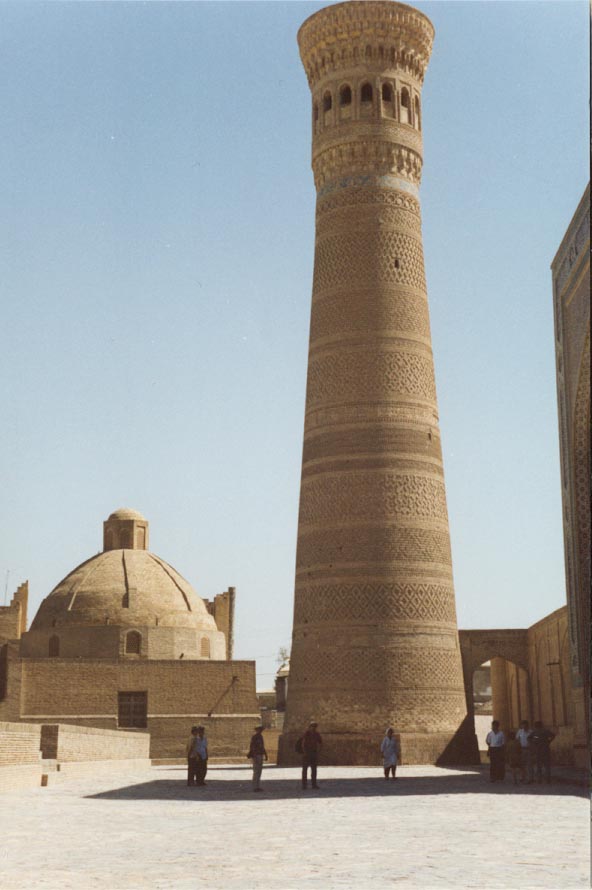
| The Land
of Tajiks |
|
History Home
Language Links
People
Map |
| Major Cities: Kashqar Khiva Xojand Merv Panjakent Samarqand Shahrisabz |
| Bokhara(Boxoro) |
 |
Among
Bukhoro's many architectural monuments, some dating from the
9th century, are several mosques, the
Ark Fortress (now a museum), and the mausoleum of Ismail
Samani (9th-10th century). A teachers college is also there. The Samanids contribution to Islamic architecture indeed is very significant. Examples of this could be observed in the growth of the cities in ninth and tenth centuries. Here we can code the to capital of the Samanids, Bukhara, which became the cultural, political, and economic centre of Central Asia for the centuries, until the Bolshevik revolution in 1920. |
| Founded
by the 1st century AD, Bukhoro was an important trade and cultural
Tajik center when it was captured (early 8th century) by the Arabs.
Early in the
Samanid period, Bukhoro(Buchara) became well-known as a center
of learning and culture throughout the eastern part of the
Persian/Tajik-speaking world. Samanid literary patronage
played an important role in preserving the culture of pre-Islamic Iran
.It was a leading center of Islamic learning under the Arabs
and the Tajik (East Persian) Samanid dynasty, which held the city
in the 9th and 10th centuries. It later was captured successively
by the Qarakhanids and Tatars. In the 16th century it became the
capital of an Uzbek khanate, and in the 18th century became an emirate.
The emirate was conquered in 1866 by Russia, which held it as a protectorate
from 1868 to 1920; then the emir was removed, and the city was made
the capital of the Bukharan People's Soviet Republic. |
 |